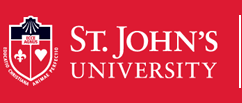Date of Award
2025
Document Type
Thesis
Degree Name
MS in Pharmacy Administration
Department
Pharmacy Administration and Public Health
First Advisor
Taehwan Park
Second Advisor
Jagannath Muzumdar
Third Advisor
Monica Hwang
Abstract
Objectives: Patients with treatment-resistant depression (TRD) experience high relapse rates and a relentless cycle of ineffective treatments, significantly impairing their quality of life and burdening healthcare resources. Psilocybin has emerged as a promising alternative, offering rapid and sustained symptom relief. However, its cost-effectiveness remains unexplored. This study conducted a pioneering cost-effectiveness analysis of psilocybin-assisted therapy (PAT) versus standard care (SoC) for individuals with TRD using a Markov model from a U.S. healthcare perspective. Methods: The model, parameterized by randomized trial efficacy data and a micro-costing approach, simulated patient transitions every six-week cycle, consistent with American Psychiatric Association guidelines. Outcomes focused on response/remission rates and incremental cost-effectiveness ratios (ICERs), expressed in 2023 U.S. dollars per quality-adjusted life years (QALYs). Extensive deterministic and probabilistic sensitivity analyses (PSA) explored uncertainties. Dosing and price point variations were also examined in scenario analysis to identify optimal strategies. Results: Psilocybin consistently dominated SoC, providing cost savings (ΔCosts = -$7,037) and superior clinical benefits (ΔQALY = 0.10). PAT increased remission by 3.20% and response by 7.75%, gaining between 0.15 and 0.25 QALYs. The PSA demonstrated an 81.98% likelihood of PAT being optimal at a $50,000/QALY threshold, with 65.89% of iterations showing greater effectiveness at lower costs. Notably, the Incremental Net Monetary Benefit (INMB) analysis indicated a value of $12,765 at this threshold, reinforcing PAT's cost-effectiveness. No scenario identified SoC as more cost-effective. PAT retained its superiority across all willingness-to-pay (WTP) values (from $50,000 to $200,000) and remained the optimal strategy across all price levels evaluated (from $500 to $10,000). Scenario analysis revealed that administering two doses three weeks apart was the most cost-effective regimen. Conclusions: Psilocybin offers a groundbreaking, cost-effective alternative to SoC for TRD. These findings support its integration into treatment protocols, warrant further research into its long-term benefits, and position PAT as a promising strategy for future clinical guidelines
Recommended Citation
Ziadi, Yosr, "COST-EFFECTIVENESS OF PSILOCYBIN-ASSISTED THERAPY VERSUS STANDARD OF CARE FOR PATIENTS WITH TREATMENT-RESISTANT DEPRESSION" (2025). Theses and Dissertations. 896.
https://scholar.stjohns.edu/theses_dissertations/896
